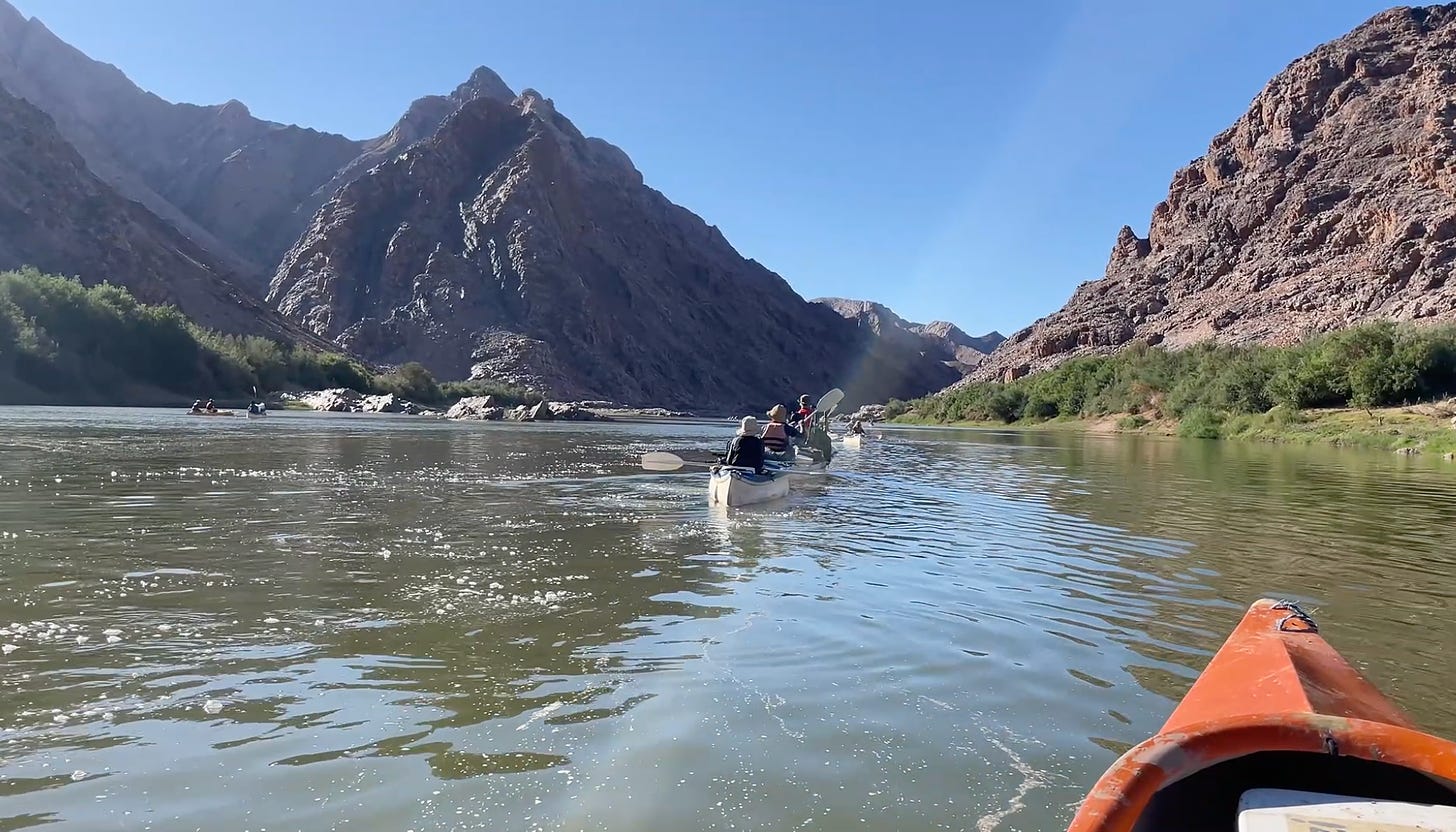The Vet Vault 3.2.1.
Fish hook removal, fentanyl truth bomb, pancreatitis treatment and making a plan to tackle 'scorpions'.
I had visions of sitting serenely in the African bush or on a beach in Cape Town writing inspired newsletter content during my time away. But then I remembered that I have 3 kids, and that it’s sometimes good to take a break. So I wrote nothing. But I’m back! 3, 2, 1…
3 Clinical Pearls.
1. Fish hook removal trick.
Not from an episode, but from Youtube, and a bit of lived experience
On my trip away I had the unenviable experience of having to remove a large rusty fish hook from my 10 year old nephew’s finger (of course everyone asks the vet to intervene, right!). Normally, when I remove fish hooks, I have the benefit of Alfaxan and sterile scalpel blades and whatever my heart desires. Out on the Orange river I had my Leatherman multitool, and nothing else.
Luckily someone shared this video on a vet social media group a few months ago:
You may have already seen it, but you may not have tried it. Well, I can attest, courtesy of my guinea pig nephew, that it works. Really well! This will be my first attempt for the next dog with a fish hook that I see. (But, unlike my nephew, my patients will still have the benefit of a quick GA!)
2. Fentanyl truth bomb.
From episode 151 on the ECC stream. With Dr Claire Sharp.
We like fentanyl CRI’s because fentanyl is short-acting, which means you can quickly titrate the dose up and down to meet your patient’s needs. And when you switch it off, it’s gone out of the body by the time the patient goes home. Yes, BUT… did you know that:
Fentanyl accumulates over time, meaning that after the first day or so it will lose its rapidly titratable properties.
It can take up to 12 - 24 hours from stopping the CRI until the fentanyl is no longer having any effect once the patient has been on it for more than a day.
Remifentanil, in contrast, is a genuinely and persistently shorter acting pure mu-agonist. But it's more expensive, and most practices don't have it.
3. New pancreatitis treatment.
From episode 157 on the medicine feed. With Prof Harry Cridge.
It can feel like our hands are tied a bit when you’re treating pancreatitis. We give fluids, control the pain, control nausea and get some nutrients into them, but beyond that you kinda just have to wait it out. But in the conversation I learnt about a therapy that can potentially target the pathology:
- "PANOQUELL" (FUZAPLADIB SODIUM) is a drug provisionally approved in the US for the treatment of pancreatitis. (‘Conditional approval’ means that it is thought to be safe and have a reasonable expectation for efficacy.)
It works by inhibiting the movement of neutrophils into the tissue around the pancreas and reduces neutrophilic inflammation, which is really the problem, right.
Unfortunately no word on availability outside the US for now, but watch this space.
2 Other things.
“The hardest thing to teach a student—and the hardest thing to believe consistently— is that there is nothing ‘out there’ to go and get. There is no part, no career, no opportunity for which you should be searching and scrounging and coveting. All of the preparation is within, and you keep yourself mentally and physically fit; you remain generous with yourself and others; you stay deeply in study about your craft. Whatever is yours will then arrive.”
“A mistake repeated more than once is a decision.”
- Paolo Coelho
1 Thing to think about.
During my recent leave of absence from normal life, we joined my wife’s sister and her very large family (6 kids - 1 single, triplets, and twins… and you thought your life was busy!) on a 4-day kayaking trip on the Orange River. The experience of floating along South Africa’s northwestern border on a ribbon of life-giving water in an otherwise stark desert landscape is pure joy. It is splendour: vast night skies, rough camping under those stars, cooking on fires, long days floating, fishing, talking, being. And it is isolation. Midway along the journey you are a hard day's paddle from a small diamond mine with an access road, and that access road is hours away from the nearest town. Oh, and phone reception… zilch.
Just on dusk of day 2, the kids were exploring around our campsite. “Oh! Scorpion!” our 5-year-old yelped. We rushed over to look at his discovery. True enough, he had found a chunky scorpion with small little pincers and a fat stinger. I’d watched enough nature documentaries to know what that means.
“What would happen if you were stung by one of these?” we asked our guide, who was a local man and a total legend.
“Well, first you’ll start itching really badly all over your body - like everywhere. And then… well, then we’d make a plan.”
“Ok… so how dangerous are we talking?”
“Not so dangerous. There’s only a small risk of dying.”
The parents exchanged glances. "Ok, shoes on kids!'
We talked about it around the fire later that night. If something serious happened out here, Utto and Zack's little medical kit would be of very little use. The reality of it is that you’d be in quite a pickle.
And right there is something I’ve always liked about Africa and Africans - about my roots: the attitude towards risk. I don’t think the adventure we had could exist in Australia, the UK, or most developed countries. Or at least not without a lot more bells and whistles. Things are simple on the Orange: two guides, life jackets required only at the large rapids, kids are welcome (even my 5-year-old, who is not what you’d call a strong swimmer) at your own risk. And there are many risks - too many to 100% account for. (In the evenings, the guides do a little perimeter walk to look for fresh leopard footprints before you set up camp.) If you had to have a strategy to mitigate all of the risks, it would very likely not be financially or practically viable for the little company that runs the trips. I suspect that if that trip had to be run as a paid activity here in Aus, the company would need an expensive insurance policy, guides certified in CPR, a medical kit with anti-venom for each critter out there, a satellite phone, lifejackets at all times, no children under 12 allowed, no walking without shoes, and definitely no swimming in the rapids - something that was actively encouraged as a fun activity on our trip. You just wouldn’t take it on. And that would be a shame, because if they let the fear of potential mishaps stop them from running these tours, they would take away the opportunity for people to have an amazing experience.
Of course, you can take this too far. Controls, planning, and safety checks are essential. I’m not advocating recklessness. But when our decisions are determined primarily by all the things that could possibly go wrong, we risk sacrificing much of the richness of life, and we sidestep many opportunities.
There are scorpions everywhere, but you can usually ‘make a plan’.
Much love,
Hugh
How to connect with us:
Listen
Learn
Connect
If you are finding these emails useful - do us a favour and forward it to a friend who you think would like it too.
And if you are that friend who had this forwarded to them and you want to get more of these emails, then …






